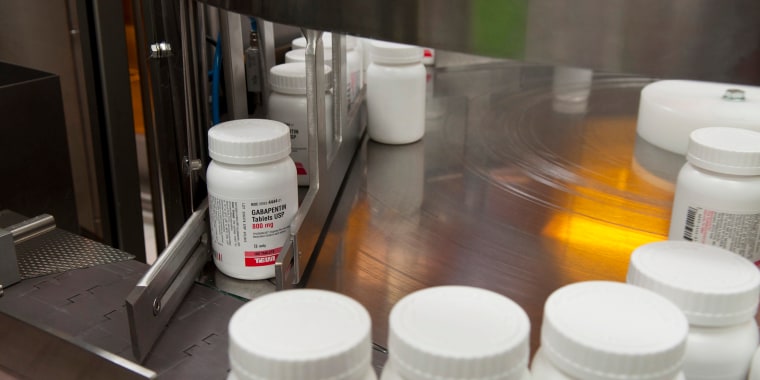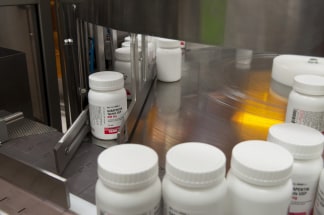https://www.nbcnews.com/storyline/americas-heroin-epidemic/health-officials-are-sounding-alarm-drug-gabapentin-it-s-not-n861111

It’s fast becoming the go-to drug for addicts in search of a stronger high — and it is not even an opioid.
Gabapentin, a purportedly nonaddictive painkiller primarily used to treat shingles and control seizures, has landed on the radar of beleaguered health officials and law enforcement already battling the deadly opioid epidemic that has ripped through the Rust Belt and claimed thousands of lives across the country.

Kentucky last year became the first state to classify gabapentin as a controlled substance after the drug showed up in a third of the state’s fatal overdoses in 2016, as The Louisville Courier Journal first reported.
And police in Ohio have reported a dramatic rise in the abuse of gabapentin, better known by brand names like Neurontin, Gralise or Horizant. There have already been on the street for as little as 75 cents apiece in the college town of Athens, Ohio.
“We started hearing from pharmacists about people trying to get early refills,” Van Ingram, executive director of the Kentucky Office of Drug Control Policy, told NBC News. “That is usually a sign that something is being abused. “
So Kentucky lawmakers classified gabapentin as a Schedule 5 drug, meaning that every time it is sold it will be “reported to our prescription monitoring program,” Ingram said. “We’ll be looking at that data.”
What makes Kentucky’s move all the more unusual is that gabapentin has the seal of approval from the U.S. Centers for Disease Control and Prevention as a nonopioid treatment for chronic pain. In fact, it has been seen as a safe alternative to addictive opioid painkillers.
“I don’t want to declare war on gabapentin,” said Ingram. “I think it’s a good drug. But when it’s being used in conjunction with other drugs or alcohol there may be a problem.”
That’s because gabapentin is, in the parlance of the drug abuse experts, a “potentiate.” That means it can make already dangerous drugs like fentanyl or heroin even more lethal.
“This means that when the drugs interact in the human body, they each increase the effects caused by the other drug,” the informational website Addict Help reported. “For alcohol, this means that the alcoholic high is stronger and kicks in with less alcohol. It also means, for both drugs, that unfortunate side effects common with these drugs are equally heightened.”
So is the danger. A Canadian study published last year, which tracked patients in Ontario from August 1997 to December 2013 who had been prescribed both opioids and gabapentin for pain, found a “substantial increase in the risk of opioid-related death.”
“Clinicians should consider carefully whether to continue prescribing this combination of products and, when the combination is deemed necessary, should closely monitor their patients and adjust opioid dose accordingly,” the researchers concluded.
How did gabapentin become such the problem? The same way opioids did — through over-prescription, said Dr. James Patrick Murphy, a pain specialist based in Louisville.
“It got prescribed so much that everybody taking an opioid for chronic pain was also taking gabapentin,” said Murphy. “People have a tendency to want to abuse anything that is mind-altering and a lot of time it is what is readily available to them.”
The fact is gabapentin “is not really that strong of a drug and relatively safe,” Murphy said. It is also a cousin to the nongeneric pain medications like Lyrica, sales of which have reportedly tripledin recent years.
“But some people will take a valium with opioids and some people will take a handful of gabapentin,” Murphy said. “The sad thing for patients who do well on gabapentin is that this will make physicians less likely to prescribe gabapentin.”
Comment;
Sad! Gabapentin is a GREAT go-to drug for chronic pain, but just like anything “to good to be true” now it is also being abused. It’s still safer for long-term use than opioids though! Maybe it needs to be a Schedule III or I hate to say, Schedule II.
- COVID UPDATE: What is the truth? - 2022-11-08
- Pathologist Speaks Out About COVID Jab Effects - 2022-07-04
- A Massive Spike in Disability is Most Likely Due to a Wave of Vaccine Injuries - 2022-06-30

